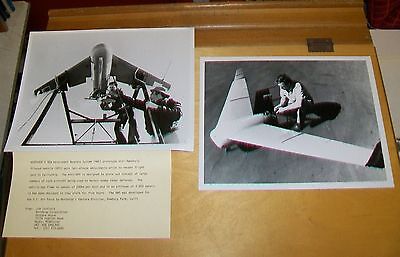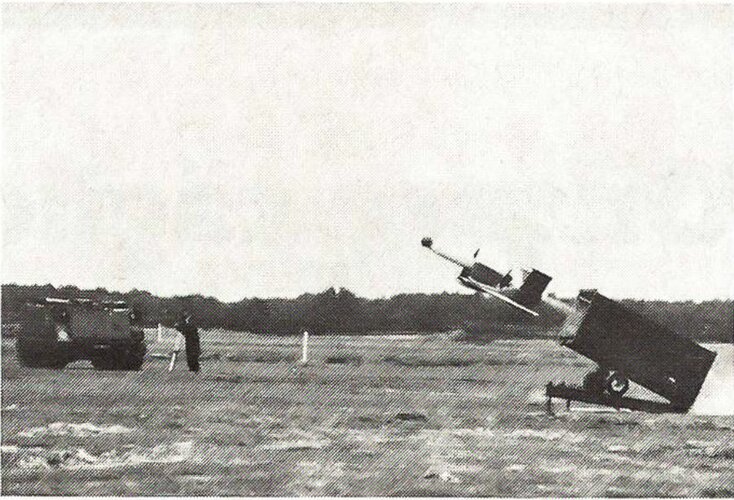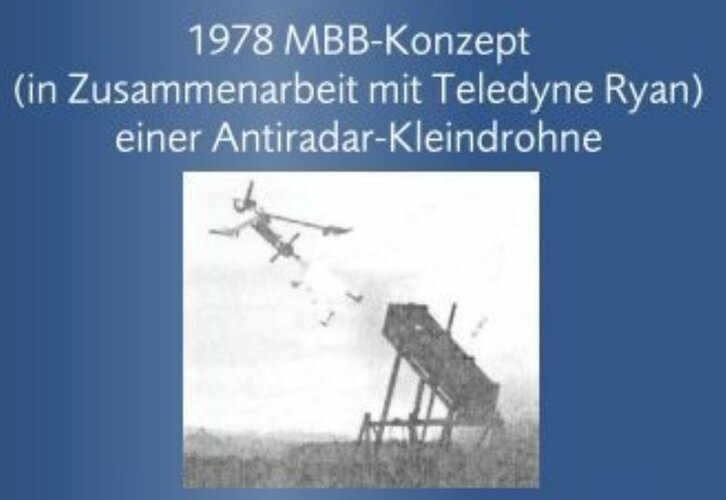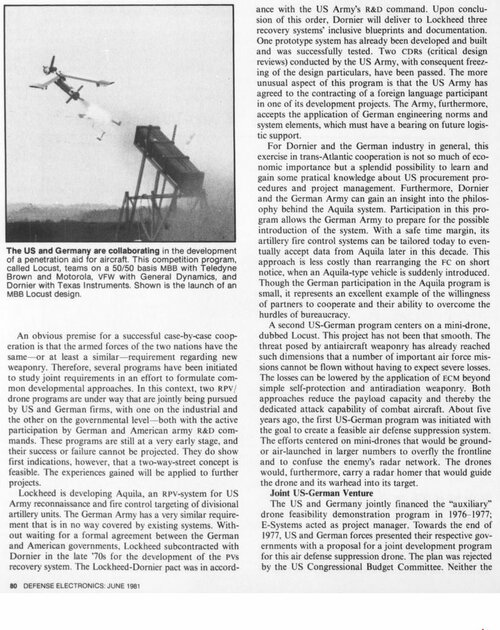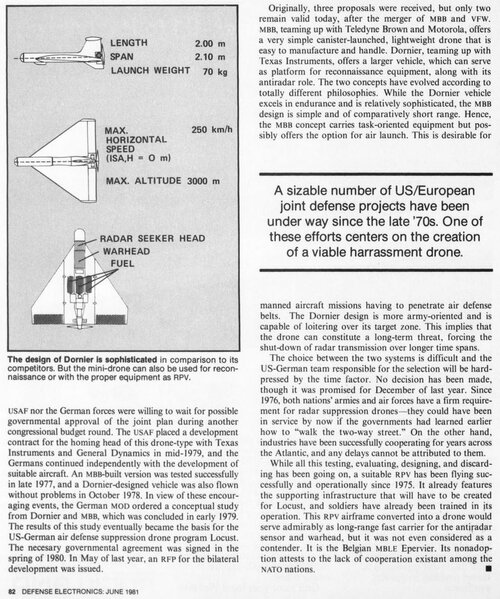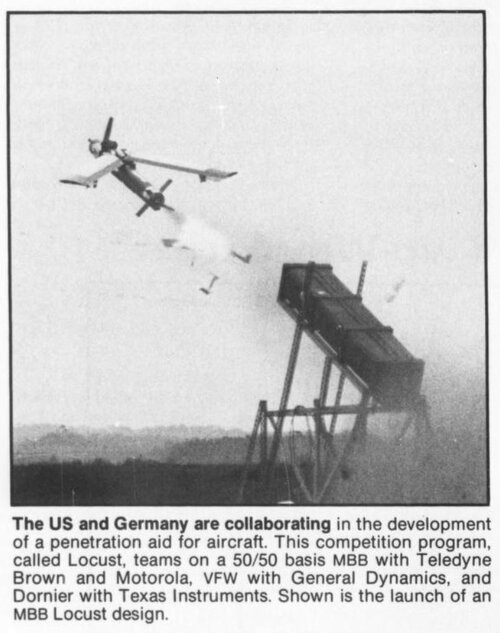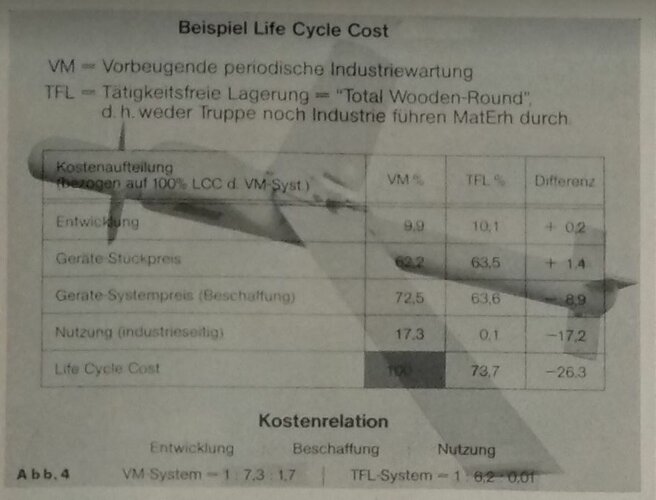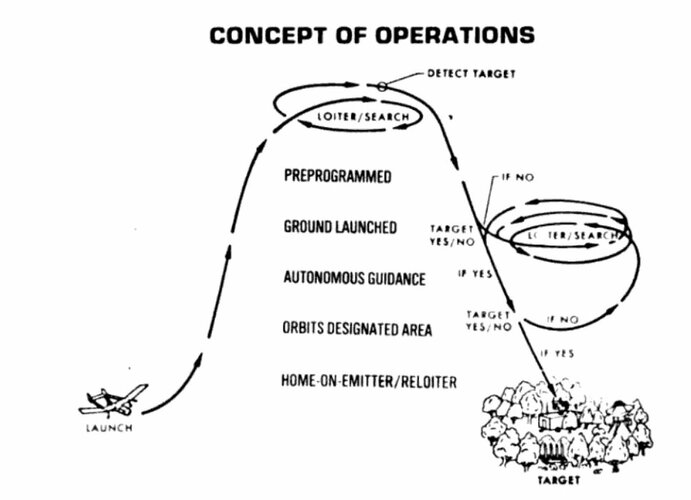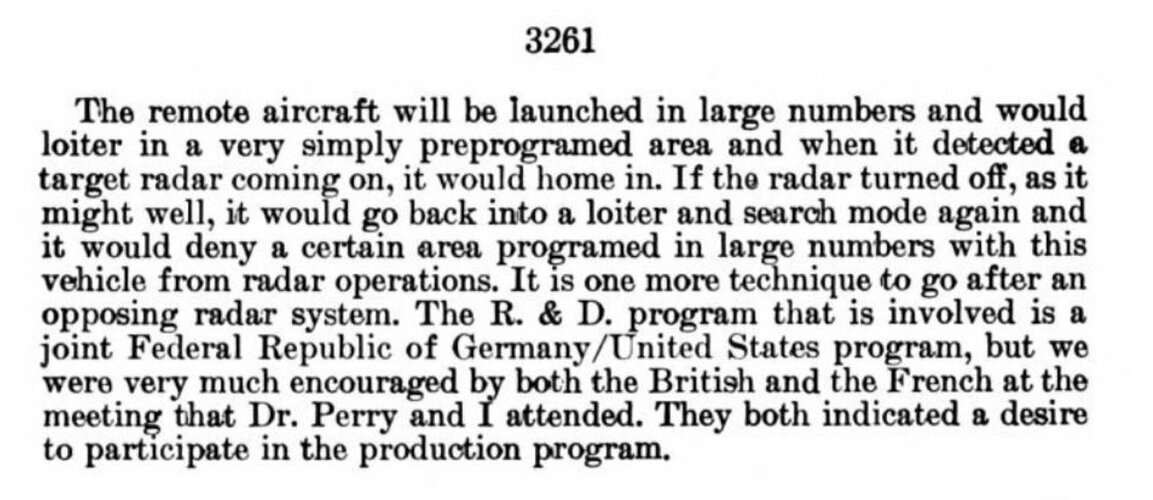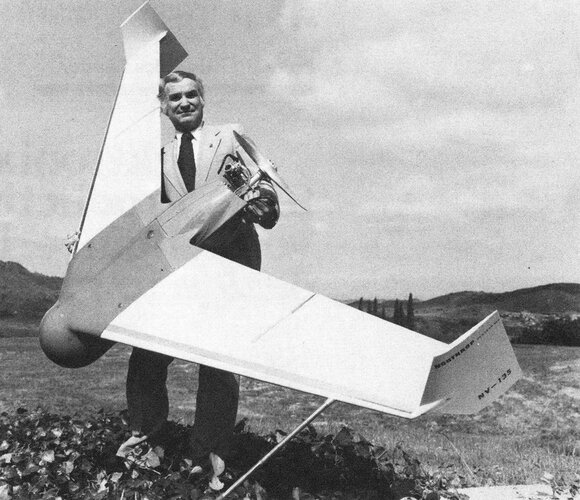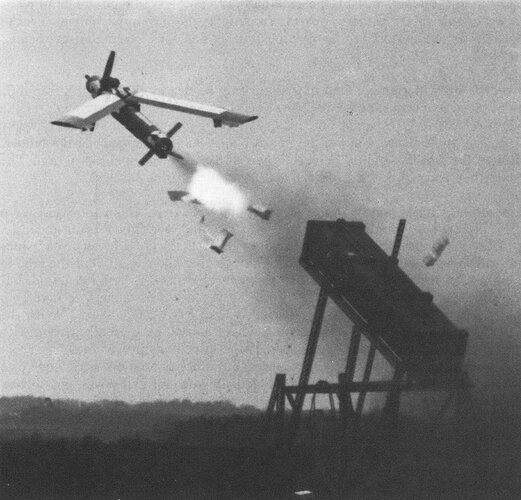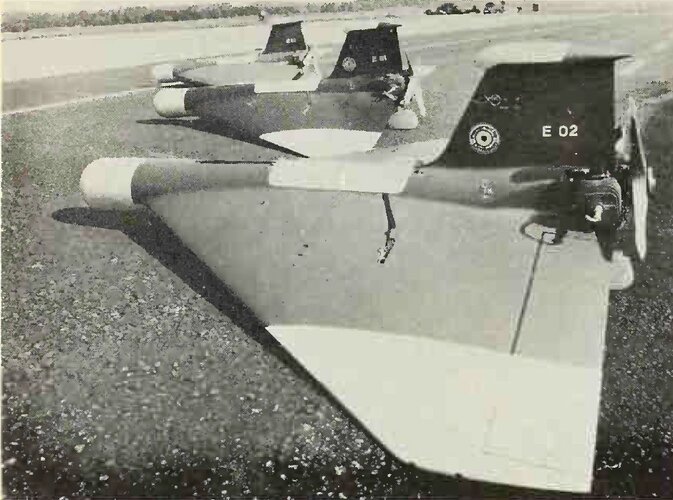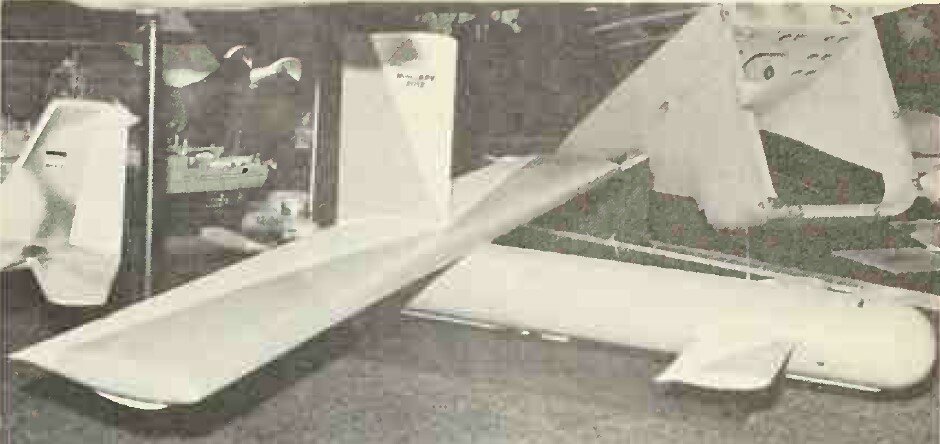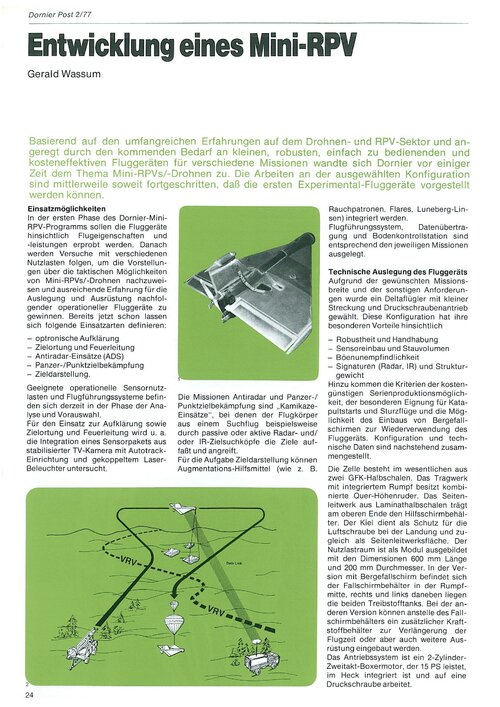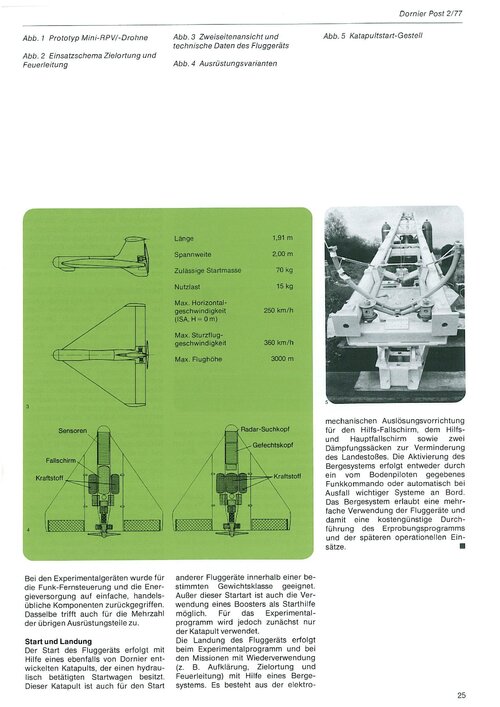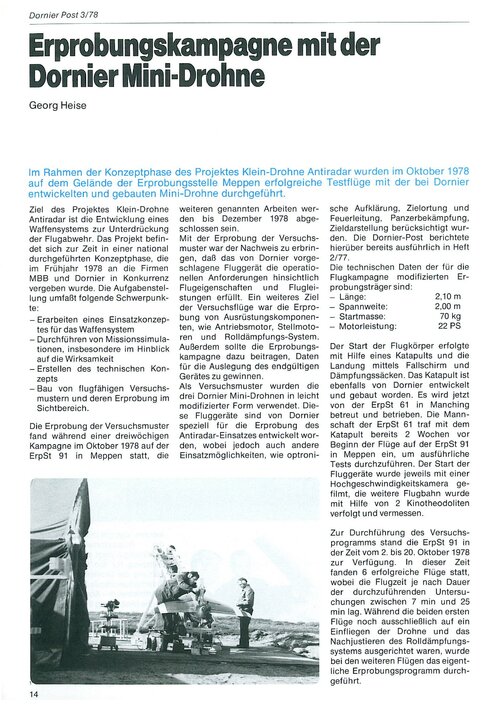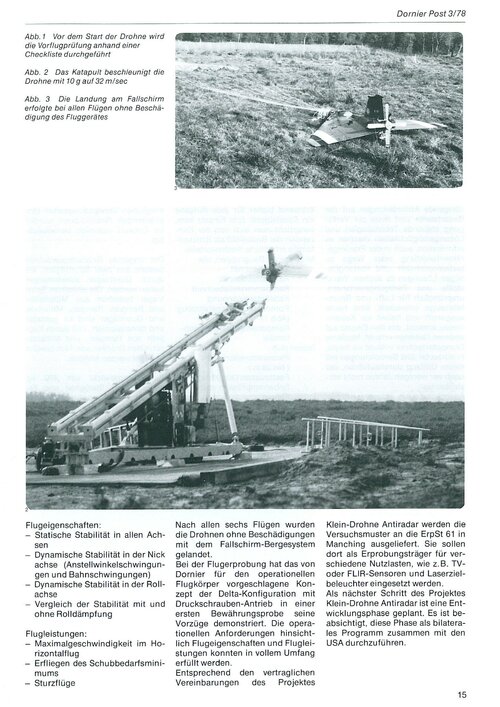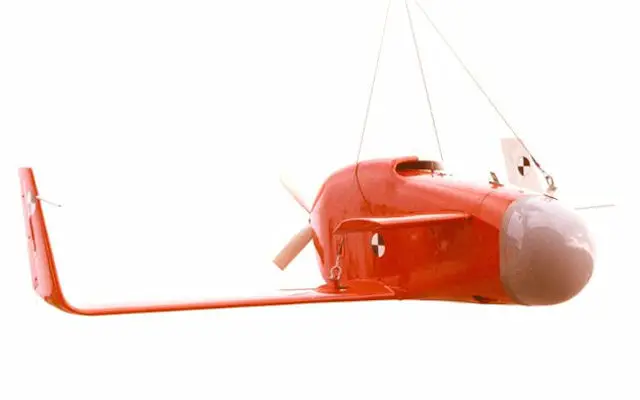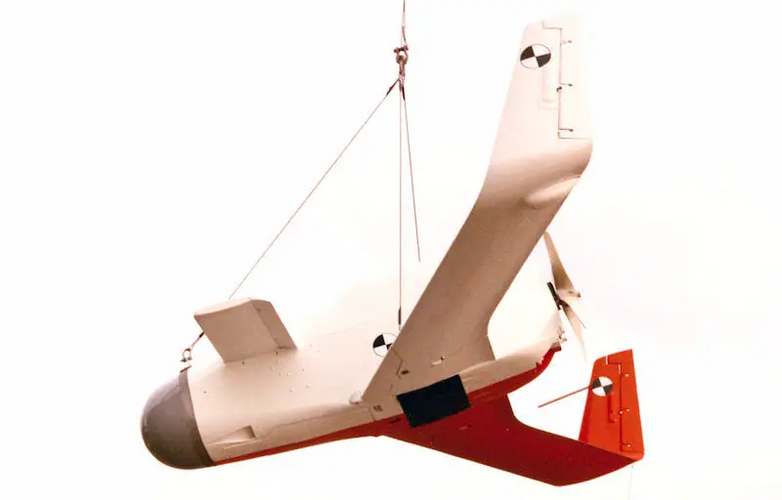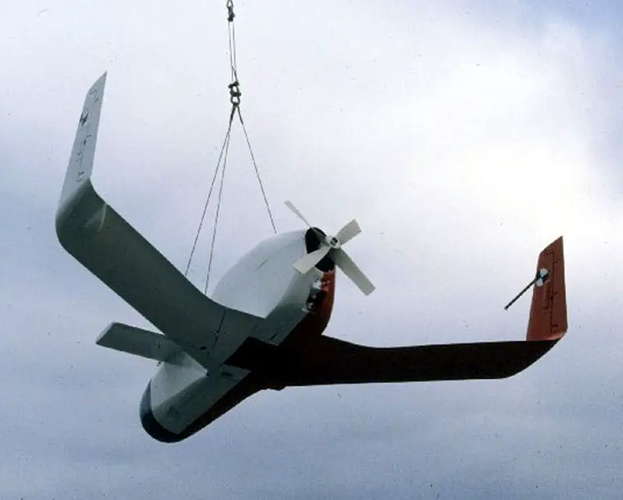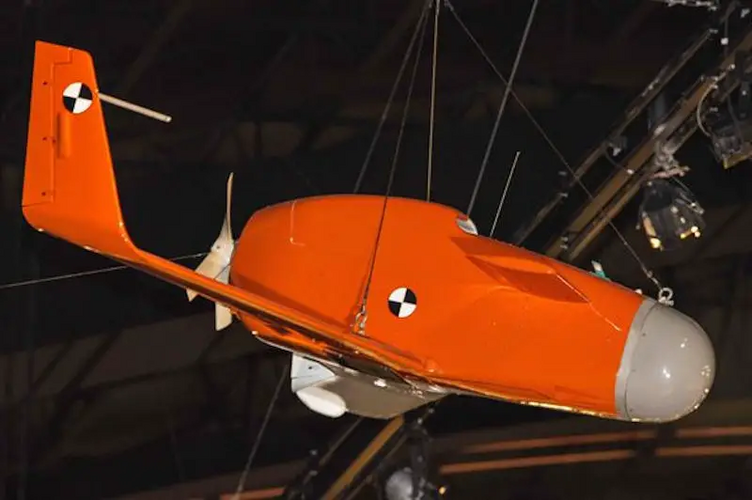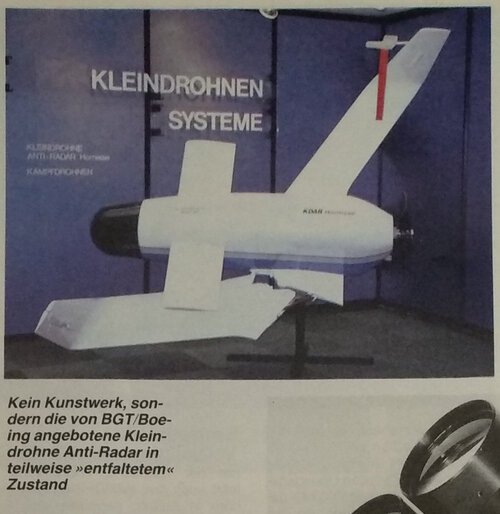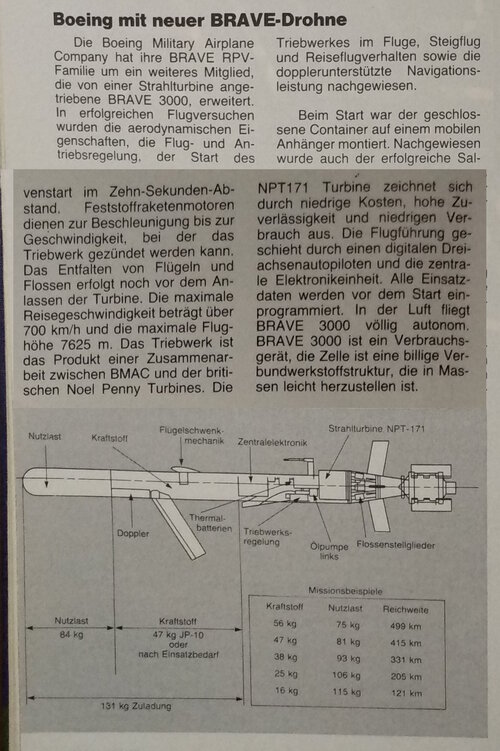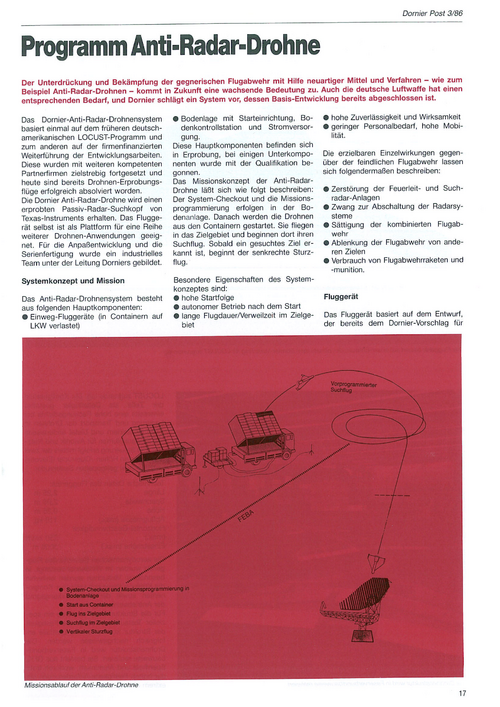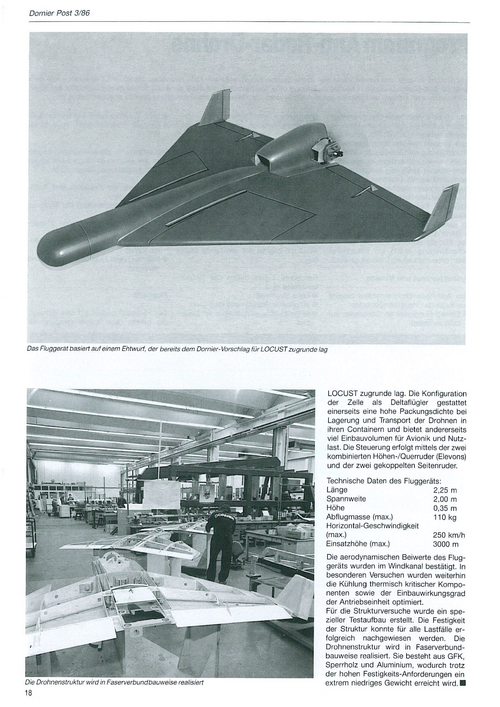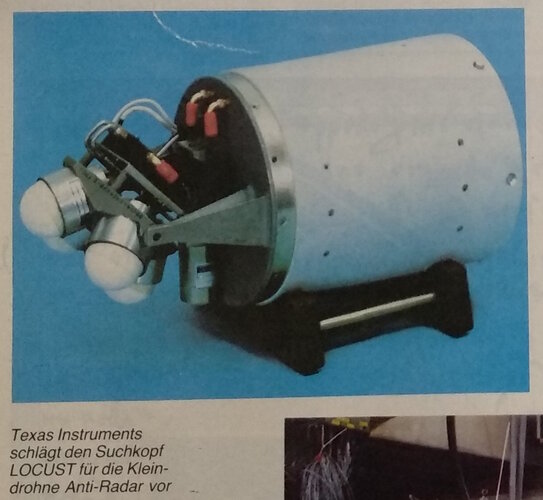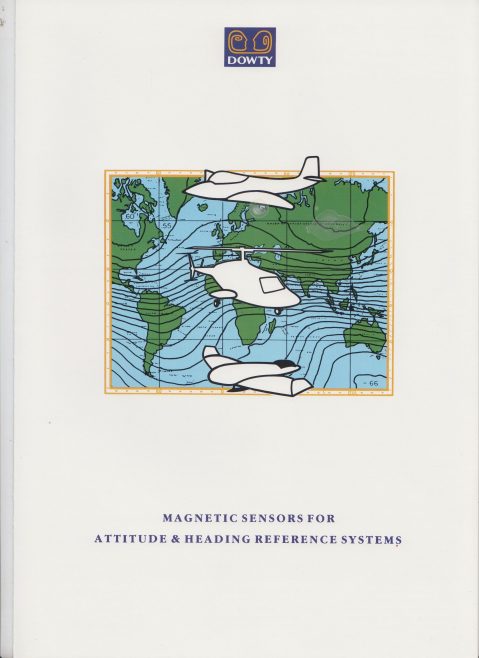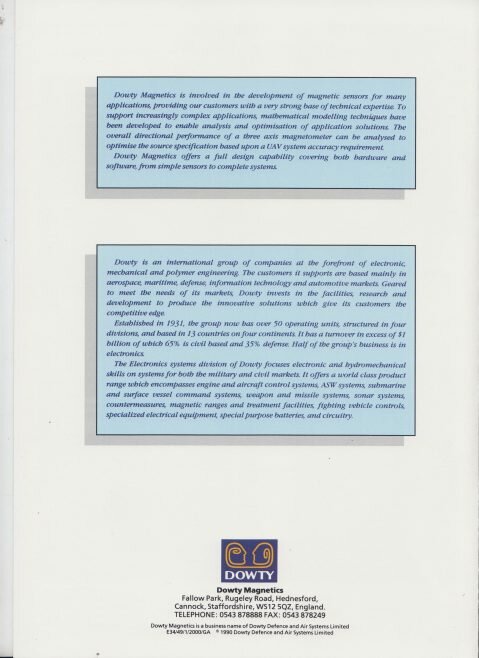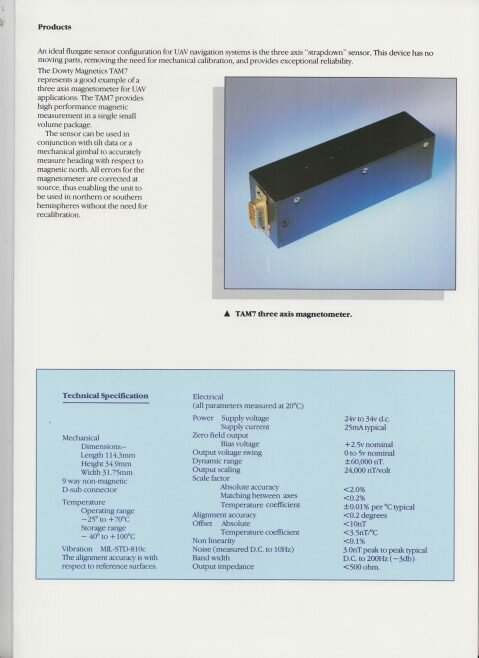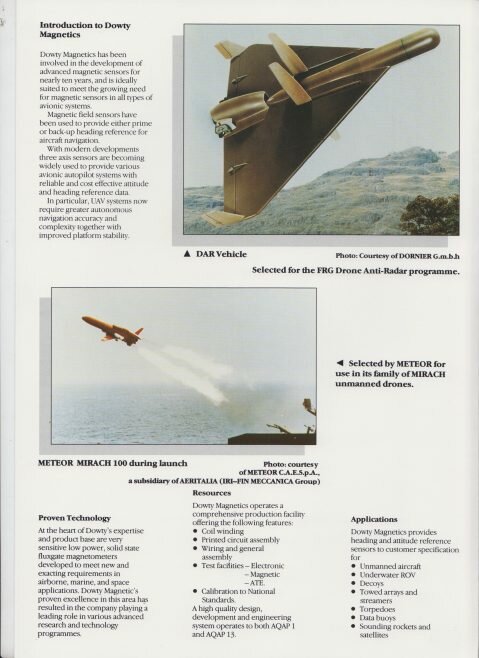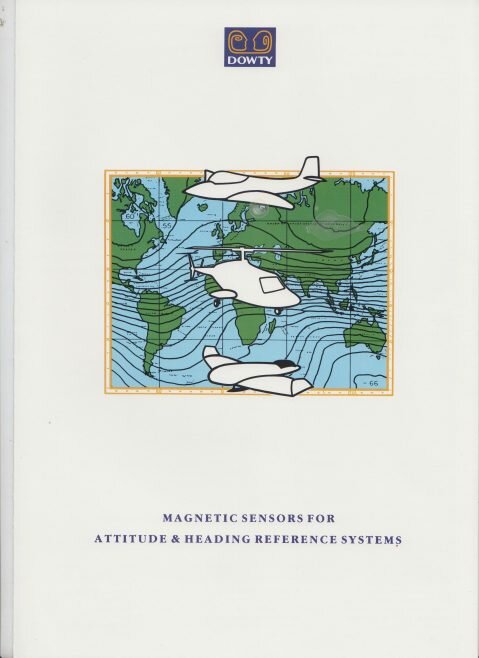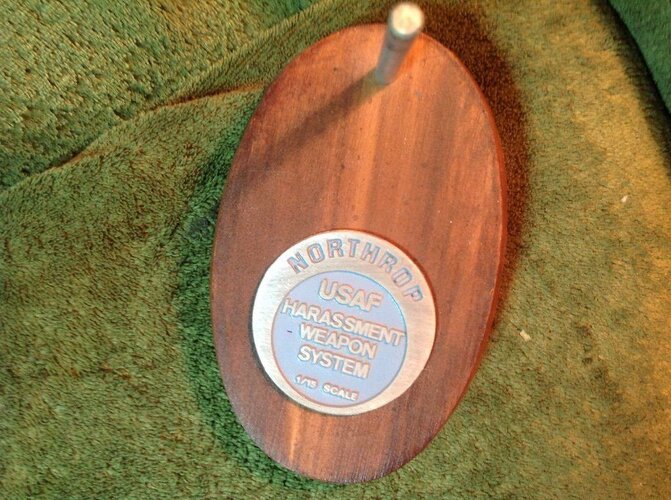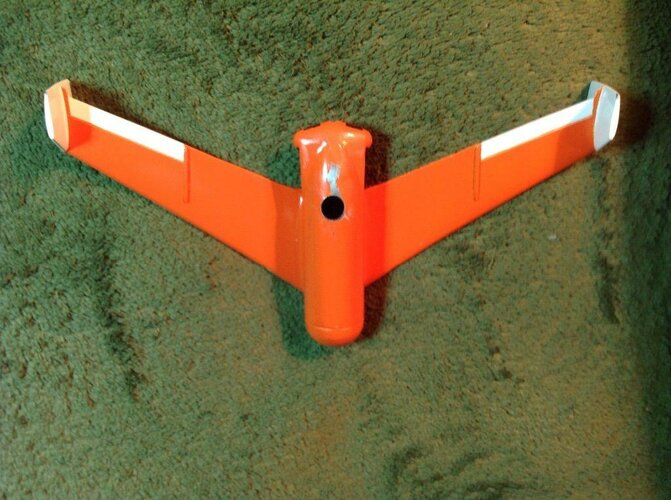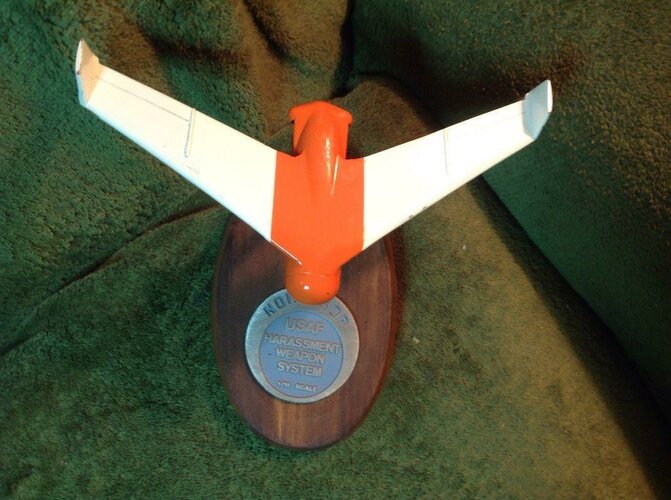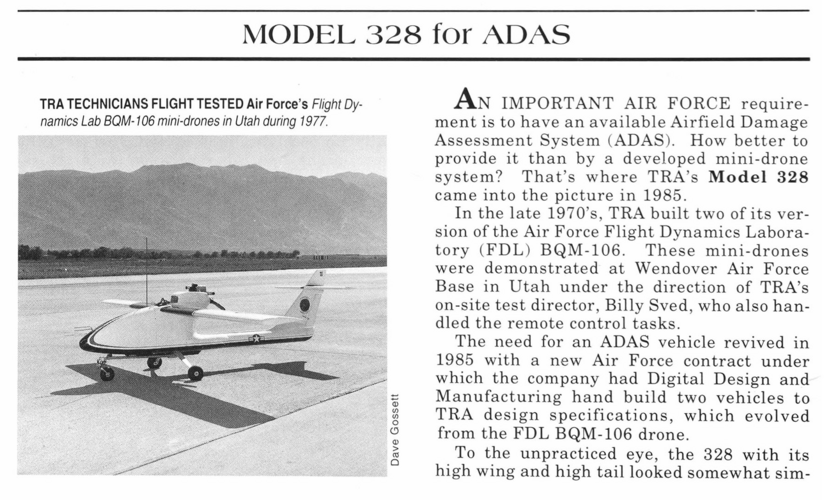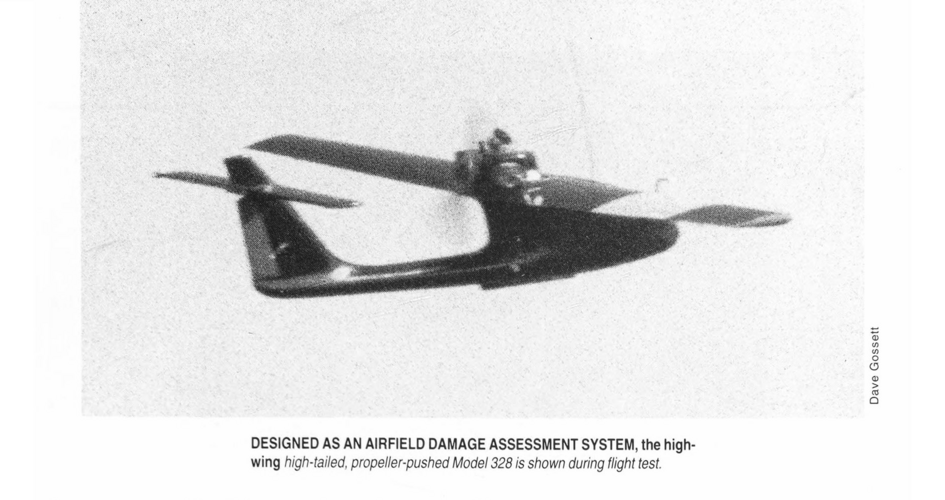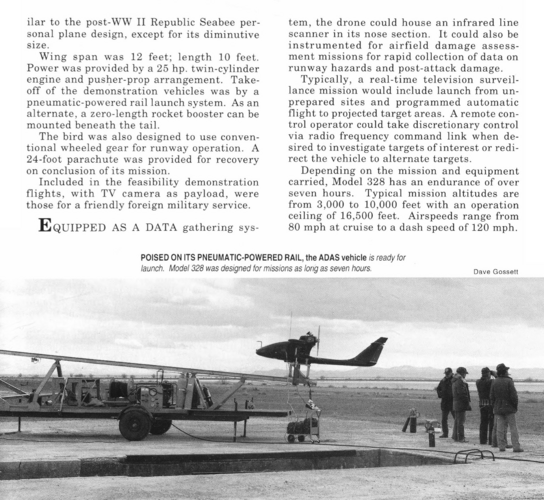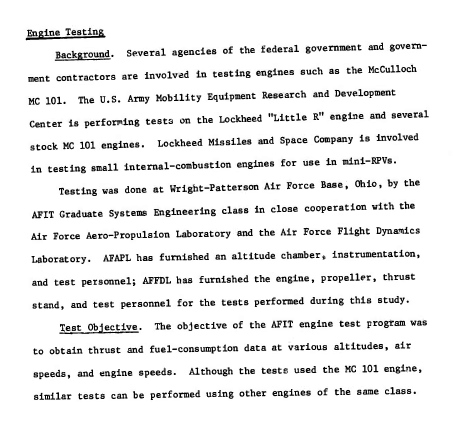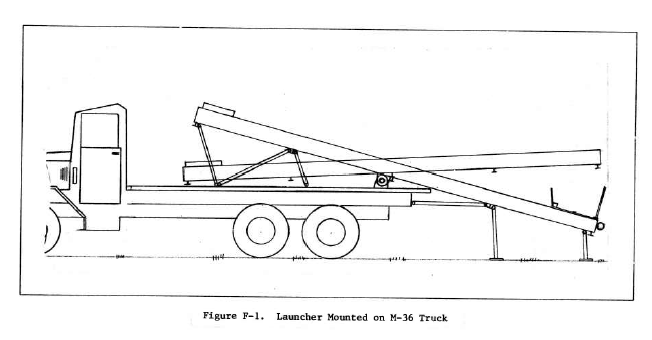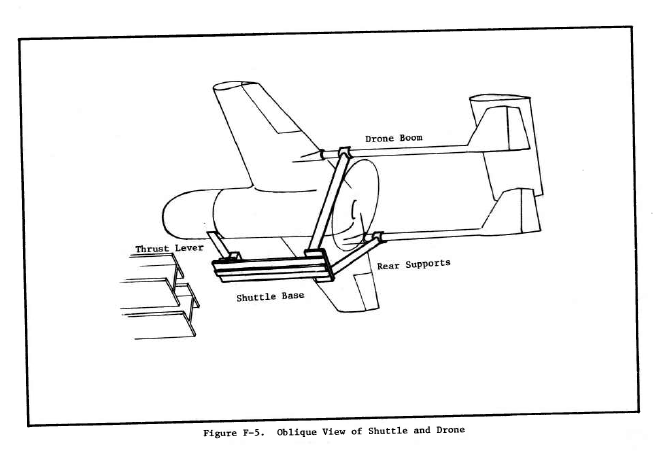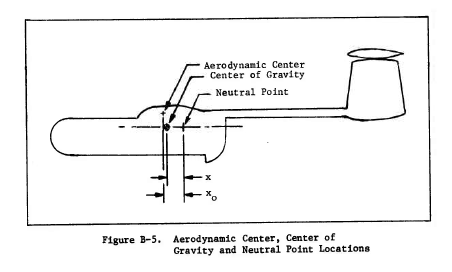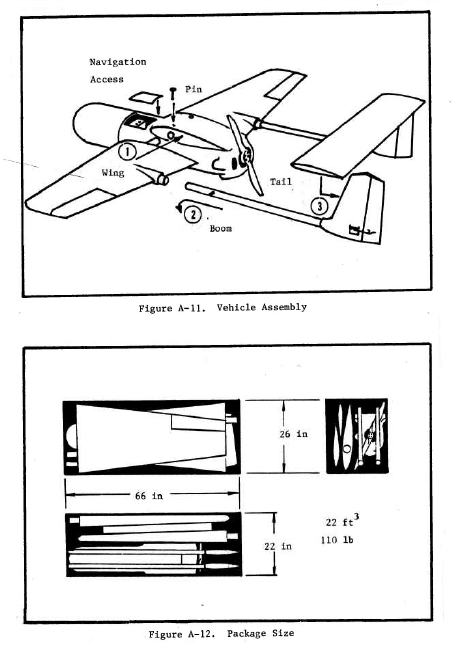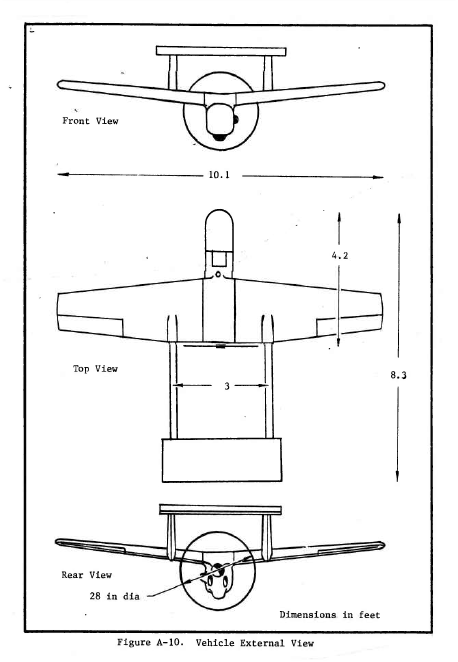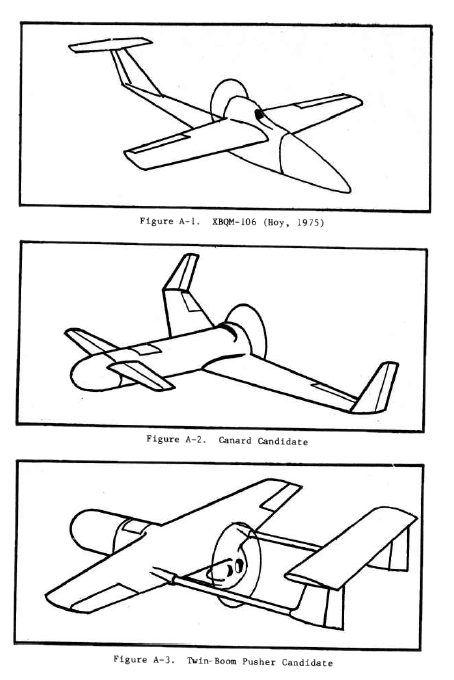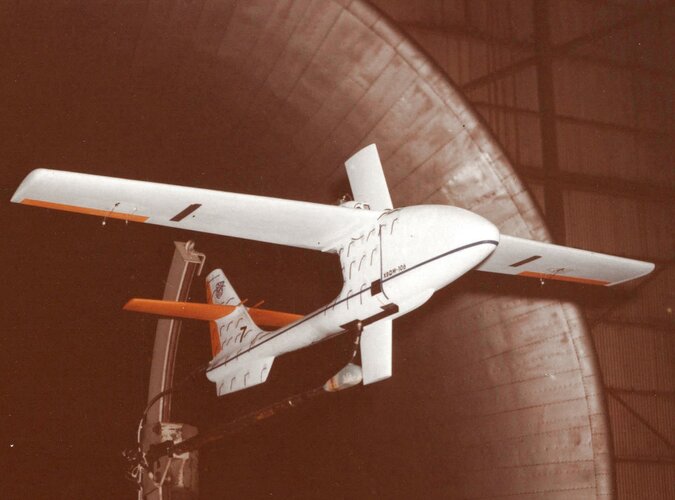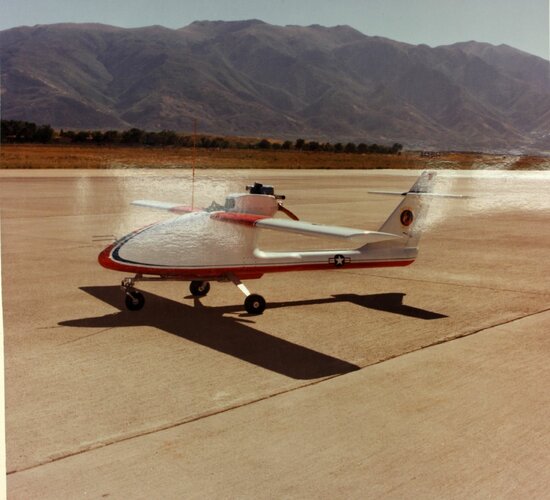The US Air Force and the Luftwaffe, Germany’s air force, began to coordinate work on one-way attack drones as early as 1975 (US Congress 1979, 589). In testimony before Congress in January 1976, Col. Newbold, a USAF official, described a high level of collaboration between Tactical Air Command and the Luftwaffe on the development of the harassment drone, and said that the German government was interested in sharing the costs of the project (US Congress 1976, 5199). According to Newbold, a joint USAF and West German team had recently moved to Nellis Air Force Base to test the warheads on the harassment drone. Indeed, in 1976 and 1977, the Air Force and Luftwaffe conducted a series of demonstrations of the harassment drone concept at Nellis and at Meppen Test Range in Germany, which involved an E-Systems E-55, a larger variant of the E-45, and a hydraulic launcher provided by Dornier (Jane’s 1979, 642; Aviation Week 1977, 83). Germany’s interest in anti-radar drones appears, at least initially, to have been driven by a desire to reduce the cost and risks associated with the air defense suppression mission. In a 1983 interview with Wehrtechnik, Col. Dieter Brunke, a Luftwaffe official responsible for tactical attack reconnaissance programs on the Armed Forces Staff, recalled that it was Israel’s use of drones in the 1973 October War that had inspired the Luftwaffe’s interest in anti-radar drones (Wehrtechnik 1983, 96). According to Brunke, the service began outlining requirements for an anti-radar drone in 1974, before issuing a “Tactical Request” for the drone in 1975. The project was initially known as the Kleindrohne Anti-Radar (KDAR), which Germany simplified to Drohne Anti-Radar (DAR) in the 1980s. “Here we see in the small drone antiradar the more cost-effective device, which can be manufactured in large numbers, and also is of ammunitionlike character, so that in this special mission it can replace manned systems,” explained Brunke (Wehrtechnik 1983, 96). Dornier unveiled its Mini-RPV at the Paris Air Show in May 1977 (Jane’s 1979, 619). Constructed of a fiberglass shell, the tailless, delta-winged Mini-RPV was designed to serve as an expendable anti-radar weapon, though it could be equipped with a parachute for recoverable missions such as reconnaissance and target acquisition (Wassum 1977, 24). The anti-radar version of the Mini-RPV became known first as the Dornier KDAR, following the convention of naming aircraft after the title of an acquisition program. In October 1978, the company concluded a three-week long flight test campaign 20 at the Meppen Test Range (Heise 1978, 14). The KDAR was initially equipped with a passive radar seeker developed by Texas Instruments, the US firm responsible for the guidance systems in the AGM-45 Shrike and AGM-88 HARM anti-radiation missiles (Dornier Post 1986). Both MBB and VFW produced competing designs to the Dornier Mini-RPV. In 1978, MBB displayed its Locust/DAR drone at the Association of the United States Army (AUSA) exhibition (IDR 1979, 74). MBB developed the Locust in cooperation with Teledyne Brown Engineering, the US firm responsible for the Firebee family of drones, and initially incorporated a radar seeker from Motorola. The MBB Locust featured a tubular fuselage and a cruciform wing. VFW, meanwhile, unveiled an early prototype of its Tucan drone at an air show in Hanover in 1979 (Munson 1988, 49). Like the Dornier Mini-RPV, the Tucan featured a tailless delta-wing design. VFW would offer a variant of the Tucan, the RT-910, for the joint US-German antiradar drone program.
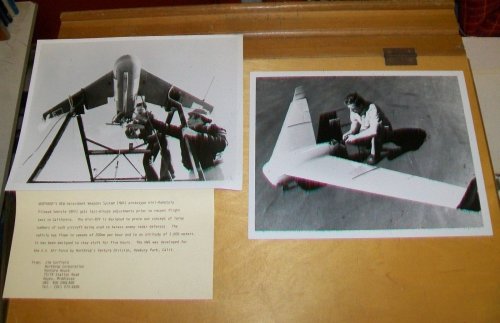 $_57 (2).JPG209.5 KB · Views: 235
$_57 (2).JPG209.5 KB · Views: 235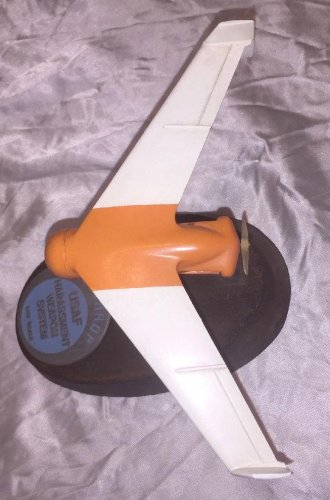 usaf-northrop-harassment-weapons_1_78daee6bd4dce3354d3dfa7b387cd432 (1).jpg118 KB · Views: 223
usaf-northrop-harassment-weapons_1_78daee6bd4dce3354d3dfa7b387cd432 (1).jpg118 KB · Views: 223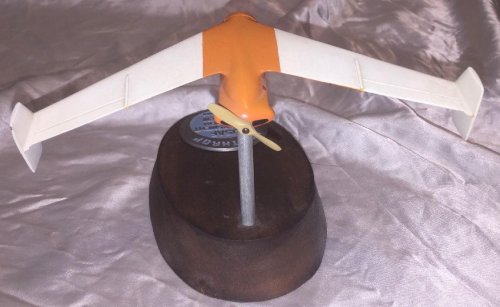 usaf-northrop-harassment-weapons_1_78daee6bd4dce3354d3dfa7b387cd432 (2).jpg128.9 KB · Views: 203
usaf-northrop-harassment-weapons_1_78daee6bd4dce3354d3dfa7b387cd432 (2).jpg128.9 KB · Views: 203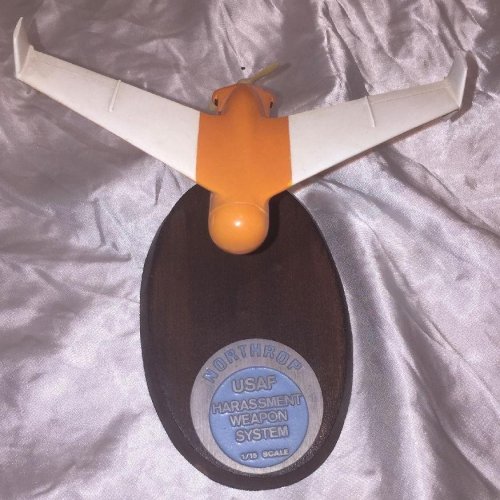 usaf-northrop-harassment-weapons_1_78daee6bd4dce3354d3dfa7b387cd432 (3).jpg181.2 KB · Views: 186
usaf-northrop-harassment-weapons_1_78daee6bd4dce3354d3dfa7b387cd432 (3).jpg181.2 KB · Views: 186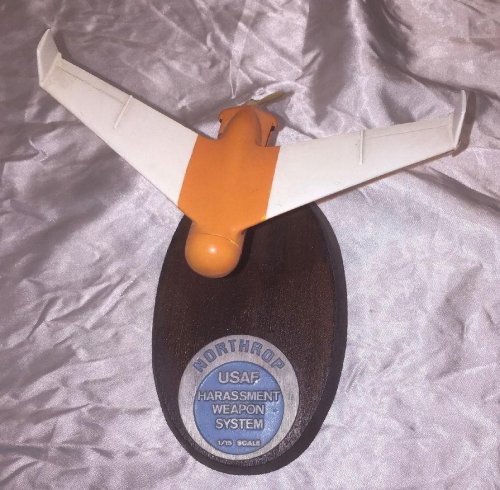 usaf-northrop-harassment-weapons_1_78daee6bd4dce3354d3dfa7b387cd432.jpg206.2 KB · Views: 204
usaf-northrop-harassment-weapons_1_78daee6bd4dce3354d3dfa7b387cd432.jpg206.2 KB · Views: 204
